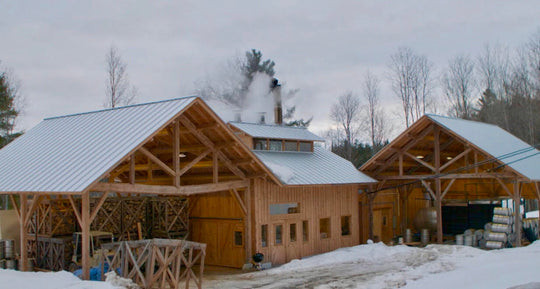Organic Wood-Fired Maple Syrup

A Small Farm, Hand Crafted, Wood-Fired Organic Maple Syrup
Why Wood-Fired Maple Syrup?
Evaporating maple syrup over a wood fire is not the easiest way to concentrate sap, but we feel strongly that it’s the best; it is sustainable, carbon neutral, and the way maple syrup was historically made for centuries. It also forces us to spend more time in our woods culling diseased trees, maintaining trails, and observing the health and beauty of our sugarbush. Instead of relying on energy stored millions of years ago in fossil fuels, we cultivate and utilize the rich energy reserves of the forest to sweeten the syrup in our bottles. Additionally the high-heat caramelization and light smokiness of the wood fire imparts an incredible flavor to our maple syrup that isn't overpowering — it just tastes better!
At Rugged Ridge our philosophy is to create the best Maple Syrup we can, while practicing great stewardship of our sugarbush and the greater environment. Being wood-fired is the most important modifier that sets us apart. While the majority of maple producers have switched to fossil fuels to evaporate sap, we consider the impacts of our actions at every stage. This means we only tap mature, healthy maples, and only use recyclable jugs and biodegradable packaging to serve you and your family.
Shop our Organic Wood-Fired Maple Syrup below. For more information about it, scroll to the bottom of the page.
